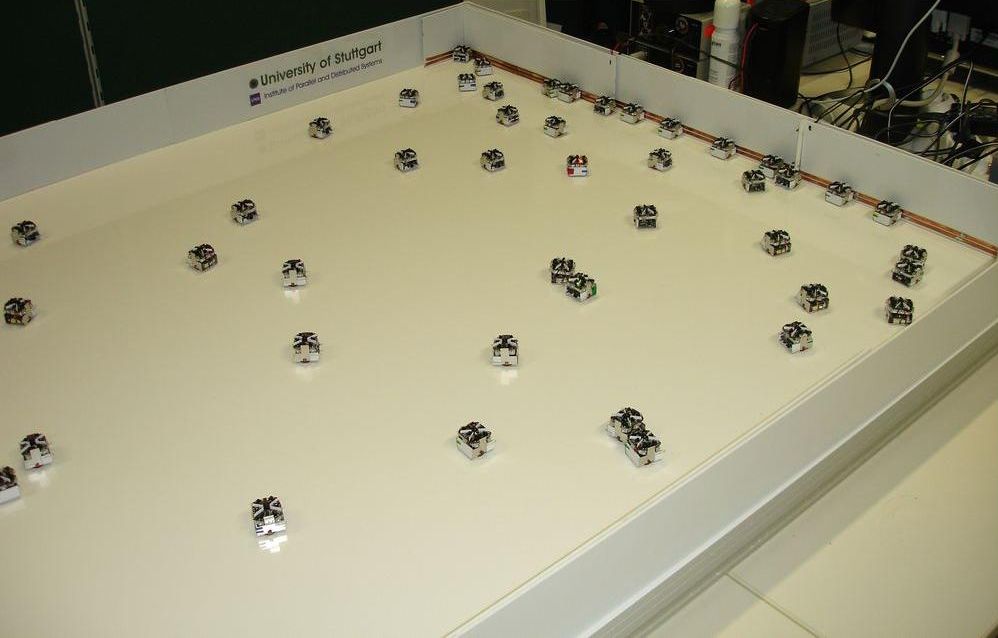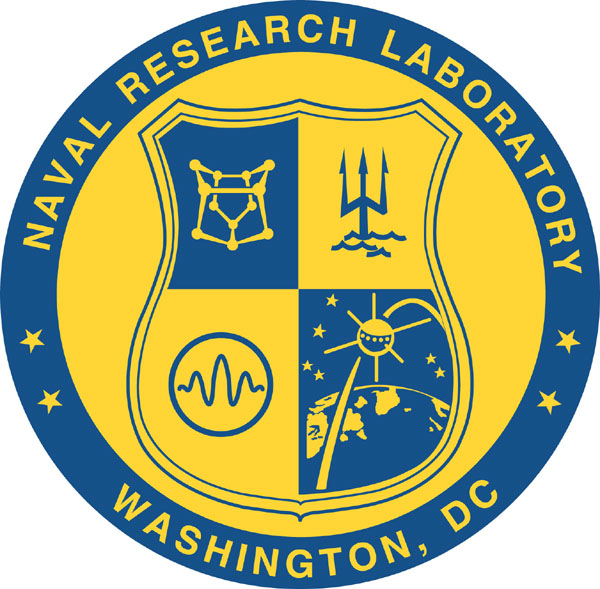|
Physicomimetics
Physicomimetics is physics-based swarm (computational) intelligence. The word is derived from '' physike'' (φυσική, Greek for "the science of physics") and ''mimesis'' (μίμησις, Greek for "imitation"). Overview In response to growing concerns that single monolithic robotic vehicles are expensive, brittle, and vulnerable, there has been a trend towards the development of distributed networks of small, inexpensive vehicles. The capability of these networks to dynamically monitor and sense environmental conditions while maintaining cost-effectiveness, robustness, and flexibility, is considered to be among their greatest assets. Dynamic sensor networks are critically needed for various tasks such as search and rescue, surveillance, perimeter defense, locating and mapping of chemical and biological hazards, virtual space telescopes, automated assembly of micro-electromechanical systems, and medical surgery (e.g., with nanobots). The core technology used to achieve these go ... [...More Info...] [...Related Items...] OR: [Wikipedia] [Google] [Baidu] |
Swarm Robotics
Swarm robotics is an approach to the coordination of multiple robots as a system which consist of large numbers of mostly simple physical robots. ″In a robot swarm, the collective behavior of the robots results from local interactions between the robots and between the robots and the environment in which they act.″ It is supposed that a desired collective behavior emerges from the interactions between the robots and interactions of robots with the environment. This approach emerged on the field of artificial swarm intelligence, as well as the biological studies of insects, ants and other fields in nature, where swarm behaviour occurs. Definition The research of swarm robotics is to study the design of robots, their physical body and their controlling behaviours. It is inspired but not limited by the emergent behaviour observed in social insects, called swarm intelligence. Relatively simple individual rules can produce a large set of complex swarm behaviours. A key compone ... [...More Info...] [...Related Items...] OR: [Wikipedia] [Google] [Baidu] |
Physics
Physics is the natural science that studies matter, its fundamental constituents, its motion and behavior through space and time, and the related entities of energy and force. "Physical science is that department of knowledge which relates to the order of nature, or, in other words, to the regular succession of events." Physics is one of the most fundamental scientific disciplines, with its main goal being to understand how the universe behaves. "Physics is one of the most fundamental of the sciences. Scientists of all disciplines use the ideas of physics, including chemists who study the structure of molecules, paleontologists who try to reconstruct how dinosaurs walked, and climatologists who study how human activities affect the atmosphere and oceans. Physics is also the foundation of all engineering and technology. No engineer could design a flat-screen TV, an interplanetary spacecraft, or even a better mousetrap without first understanding the basic laws of physic ... [...More Info...] [...Related Items...] OR: [Wikipedia] [Google] [Baidu] |
Physis
Fusis, Phusis or Physis (; grc, φύσις ) is a Greek philosophical, theological, and scientific term, usually translated into English—according to its Latin translation "natura"—as "nature". The term originated in ancient Greek philosophy, and was later used in Christian theology and Western philosophy. In pre-Socratic usage, ''physis'' was contrasted with , , "law, human convention". Another opposition, particularly well-known from the works of Aristotle, is that of ''physis'' and ''techne'' – in this case, what is produced and what is artificial are distinguished from beings that arise spontaneously from their own essence, as do agents such as humans. Further, since Aristotle the ''physical'' (the subject matter of ''physics'', properly "natural things") has been juxtaposed to the ''metaphysical''. Linguistics The Greek word ''physis'' can be considered the equivalent of the Latin ''natura''. The abstract term physis is derived from the verb ''phyesthai/phynai'', w ... [...More Info...] [...Related Items...] OR: [Wikipedia] [Google] [Baidu] |
Ancient Greek
Ancient Greek includes the forms of the Greek language used in ancient Greece and the ancient world from around 1500 BC to 300 BC. It is often roughly divided into the following periods: Mycenaean Greek (), Dark Ages (), the Archaic period (), and the Classical period (). Ancient Greek was the language of Homer and of fifth-century Athenian historians, playwrights, and philosophers. It has contributed many words to English vocabulary and has been a standard subject of study in educational institutions of the Western world since the Renaissance. This article primarily contains information about the Epic and Classical periods of the language. From the Hellenistic period (), Ancient Greek was followed by Koine Greek, which is regarded as a separate historical stage, although its earliest form closely resembles Attic Greek and its latest form approaches Medieval Greek. There were several regional dialects of Ancient Greek, of which Attic Greek developed into Koine. Dia ... [...More Info...] [...Related Items...] OR: [Wikipedia] [Google] [Baidu] |
Mimesis
Mimesis (; grc, μίμησις, ''mīmēsis'') is a term used in literary criticism and philosophy that carries a wide range of meanings, including ''imitatio'', imitation, nonsensuous similarity, receptivity, representation, mimicry, the act of expression, the act of resembling, and the presentation of the self. The original Ancient Greek term ''mīmēsis'' ( grc, μίμησις, label=none) derives from ''mīmeisthai'' ( grc, μιμεῖσθαι, label=none, 'to imitate'), itself coming from ''mimos'' ( μῖμος, 'imitator, actor'). In ancient Greece, ''mīmēsis'' was an idea that governed the creation of works of art, in particular, with correspondence to the physical world understood as a model for beauty, truth, and the good. Plato contrasted ''mimesis'', or imitation Imitation (from Latin ''imitatio'', "a copying, imitation") is a behavior whereby an individual observes and replicates another's behavior. Imitation is also a form of that leads to the "developm ... [...More Info...] [...Related Items...] OR: [Wikipedia] [Google] [Baidu] |
Micro-electromechanical Systems
Microelectromechanical systems (MEMS), also written as micro-electro-mechanical systems (or microelectronic and microelectromechanical systems) and the related micromechatronics and microsystems constitute the technology of microscopic devices, particularly those with moving parts. They merge at the nanoscale into nanoelectromechanical systems (NEMS) and nanotechnology. MEMS are also referred to as micromachines in Japan and microsystem technology (MST) in Europe. MEMS are made up of components between 1 and 100 micrometers in size (i.e., 0.001 to 0.1 mm), and MEMS devices generally range in size from 20 micrometres to a millimetre (i.e., 0.02 to 1.0 mm), although components arranged in arrays (e.g., digital micromirror devices) can be more than 1000 mm2. They usually consist of a central unit that processes data (an integrated circuit chip such as microprocessor) and several components that interact with the surroundings (such as microsensors). Because of the la ... [...More Info...] [...Related Items...] OR: [Wikipedia] [Google] [Baidu] |
Naval Research Laboratory
The United States Naval Research Laboratory (NRL) is the corporate research laboratory for the United States Navy and the United States Marine Corps. It was founded in 1923 and conducts basic scientific research, applied research, technological development and prototyping. The laboratory's specialties include plasma physics, space physics, materials science, and tactical electronic warfare. NRL is one of the first US government scientific R&D laboratories, having opened in 1923 at the instigation of Thomas Edison, and is currently under the Office of Naval Research. As of 2016, NRL was a Navy Working Capital Fund activity, which means it is not a line-item in the US Federal Budget. Instead of direct funding from Congress, all costs, including overhead, were recovered through sponsor-funded research projects. NRL's research expenditures were approximately $1 billion per year. Research The Naval Research Laboratory conducts a wide variety of basic research and applied r ... [...More Info...] [...Related Items...] OR: [Wikipedia] [Google] [Baidu] |



